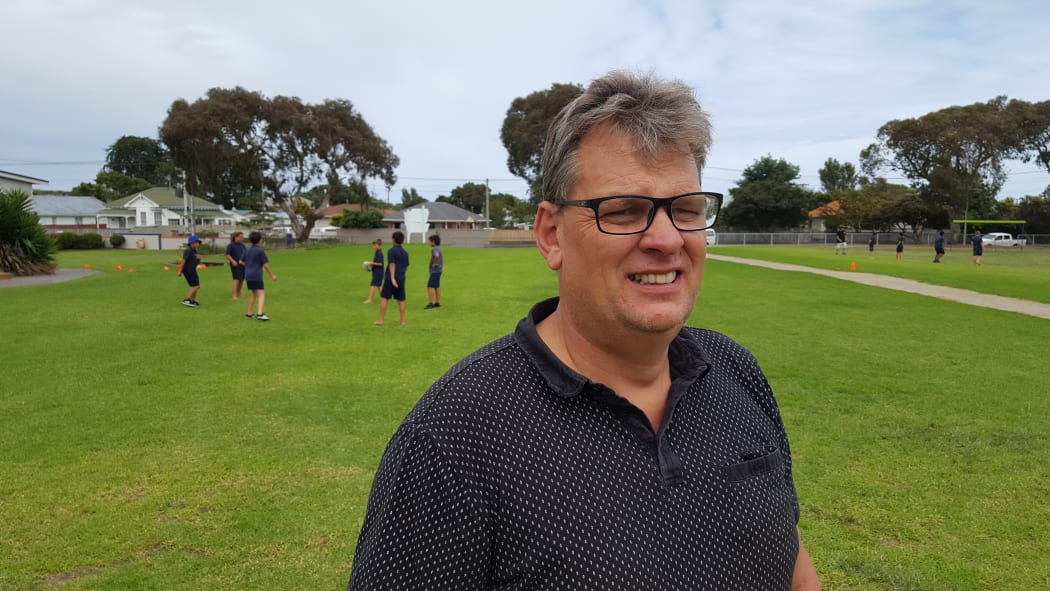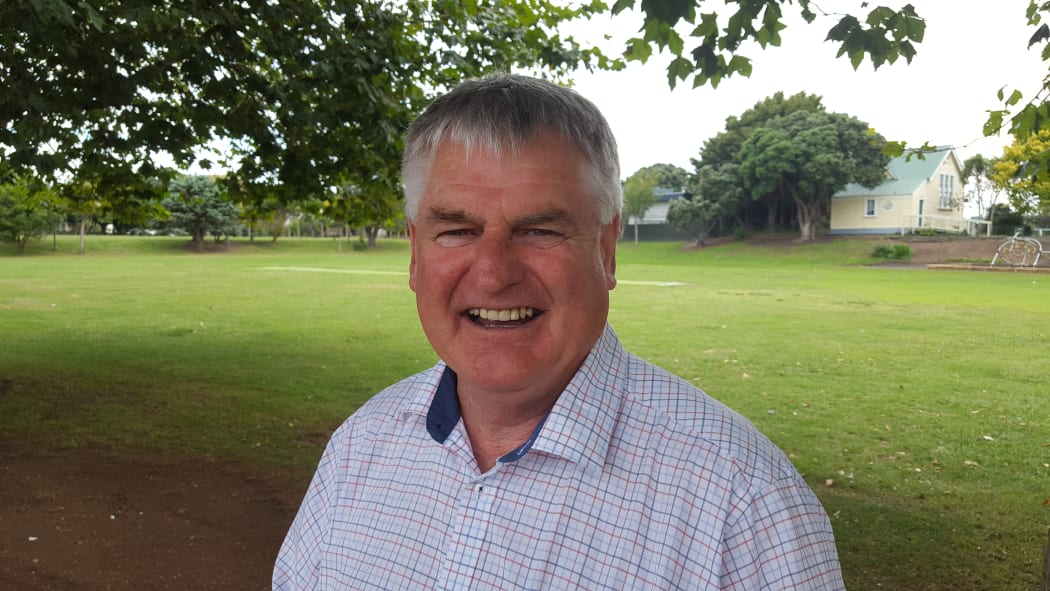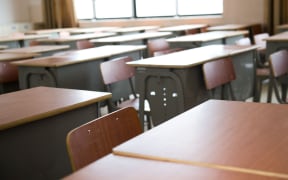Whanganui principals are worried enrolments at some of the city's schools have fallen as low as 50 or 60 children and they might need government intervention.

Gonville School principal Greg Elgar said unused or under-utilised classrooms were expensive to maintain. Photo: RNZ / John Gerritsen
Principals told RNZ they wanted the Education Ministry to help develop a plan for the future and ensure fair distribution of the supply of students.
The Education Ministry said the city had enough children to fill just over 70 percent of its classroom space, though forecasts based on the 2013 census indicated that could fall as low as 65 percent in the next 20 years.
Last year, two Whanganui primary schools were at a quarter of their capacity, and two of the five state and integrated secondary schools were less than half full.
Whanganui Principals Association president Maryann Roberts said the problem had been building for some time.
"The statistics show there's a reducing number of children across New Zealand, so Whanganui is no different," she said.
The situation was complicated by a recent increase in the city's population due to Whanganui's relatively affordable house prices, which in turn had caused changes in the supply of rental accommodation, Ms Roberts said.
Despite a small increase in the number of children in the city (95 students more than two years ago, according to the Education Ministry), some schools were still struggling to attract students.
Ms Roberts said her own school had 60 children, but capacity for 120.
Principals were talking about the situation more frequently and it was likely they would ask the Education Ministry to help with things such as enrolment zones, she said.
"There's some weird and wonderful zones that are in place," Ms Roberts said.
"The ministry play a direct role with zoning and that's an area that they could look at more closely."
Ministry enablement and support sector deputy secretary Katrina Casey said no changes in the schooling network in Whanganui were planned at this stage because forecasts indicated student numbers would be relatively stable.
The ministry could remove or demolish unused buildings, and two schools had been shut down in Whanganui recently - Aramoho School in 2016 and Kiwi Street School in 2003, Ms Casey said.

Whanganui Intermediate School principal Charles Oliver said in his opinion a school roll of 50 to 100 students was too small for an urban area. Photo: RNZ / John Gerritsen
But Whanganui Intermediate principal Charles Oliver said further work was needed because some schools had only 50 students.
"In a small rural area that's not a problem, but in an urban centre 50 seems ridiculous. Fifty, 60, even 100, that's too small for an urban centre in my opinion," Mr Oliver said.
Empty classrooms were a waste of schools' maintenance funding and principals needed to ask the Education Ministry and perhaps the Whanganui District Council to lead a discussion about the future, Mr Oliver said.
"If the discussion doesn't come about soon, in five or 10 years we're going to reach a crisis and schools will be forced to close, rather than making sensible decisions now," he said.
Whanganui Mayor Hamish McDouall said the council wanted to be involved with any discussion of the future of the city's schools and he had already talked to principals about its six secondary schools.
It would be premature to decide that the city had too many schools and forecast declines in Whanganui's future population might be proved wrong, Mr McDouall said.
"People are leaving Auckland and they're looking at places like Whanganui, like Hawke's Bay, like Feilding and they come here because of the lifestyle and the cheap affordable houses and the jobs. And the other thing - great schools," he said.
"While there is that spare capacity I see that as capacity for growth rather than over-capacity."
Difficult forecasts
Gonville School is a case study in the difficulty of assessing a school's classroom capacity and forecasting changes in enrolment.
Principal Greg Elgar said the school was once one of just four in the city and had a roll of 1500 students, but that was about 80 years ago and times had changed dramatically.
"This school has a capacity of 350. About three years ago we had 101, 102 children, we're now 200. So we've grown and that's not uncommon for a few schools. Quite a lot of schools in Whanganui have their roll's starting to go up."
A recent influx of home-buyers and changes in the supply of rental homes was behind the increase, Mr Elgar said.
He said the Education Ministry had wanted to remove some of the school's classrooms, but luckily that did not happen because those rooms were now in use.
A complicating factor was the ministry considered a large room which functioned as the school's hall to be a classroom space with capacity for 150 children, but the school did not agree, Mr Elgar said.
Despite the increase in student enrolments, Mr Elgar said the Education Ministry needed to help the city come up with a plan for the future of its schools.
"They have to look at what schools are beneficial, what schools are working well, what communities go together," he said.
Unused or under-utilised classrooms were expensive to maintain and some students took the bus out of the Gonville area to other schools, which was also wasteful, Mr Elgar said.
"It would be nice if the ministry came up with a plan looking at our numbers and what's going to happen."






